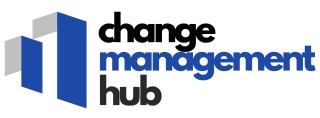Understanding Talent Mapping
Decoding the Basics of Talent Mapping
Talent mapping, an intrinsic component of talent management, is rapidly gaining traction in the business world. This strategic process revolves around understanding and leveraging employee skills, ultimately aligning them with an organization's future development goals. By identifying skill gaps and planning for long-term workforce needs, organizations can ensure sustained business growth amidst changing environments.
The essence of talent mapping lies in its ability to provide a clear picture of a company’s current talent pool. This involves cataloging existing employees’ competencies and pinpointing areas requiring enhancements. As organizations strive to remain competitive, recognizing their high potential candidates becomes vital. Through talent mapping, companies can optimize their talent acquisition strategies and identify successors with precision.
Key elements of an effective talent mapping initiative include:
- Identifying current skills and competencies: A comprehensive overview of the workforce to identify strengths and areas for development.
- Understanding future talent needs: Anticipate the skills and capabilities required in the evolving business landscape.
- Creating development plans: Fostering an environment that promotes continuous learning and skill enhancement.
- Addressing skill gaps: Implement training programs and workshops to bridge the identified gaps in the workforce.
For businesses aiming to stay ahead of the curve, talent mapping is an invaluable tool in succession planning and workforce development. By maintaining a robust map of current capabilities and potential growth areas, organizations are better equipped to navigate the complexities of change management. This approach not only supports the hiring of ideal candidates but also aids in nurturing existing employees to become top talent over time.
To delve deeper into how preemptive strategies influence change management, explore the
importance of preemptive maintenance.
Talent mapping, when executed conscientiously, positions companies not just for immediate success but for enduring prosperity in a dynamic market environment.
The Role of Talent Mapping in Change Management
Harnessing the Potential of Employee Capabilities in Change
The integration of talent mapping into change management presents a unique opportunity for businesses. By identifying and leveraging the skills and competencies of the employees, organizations can streamline transformations and ensure a smoother transition. This practice not only addresses skill gaps but also aligns the workforce with future business goals.
Talent mapping allows a company to scrutinize its current workforce and identify high potential employees who can lead the change effectively. Through this mapping process, businesses can develop succession planning strategies that ensure continuity and sustainability. The emphasis on mapping talent ensures that individuals with the right skills are in the right roles, which is critical for any change strategy's success.
Moreover, the process aids in talent acquisition by pinpointing the ideal candidate profiles necessary to bridge existing gaps. Hiring decisions can then be made with precision, supporting the company’s long-term objectives. The outcome is a well-equipped talent pool ready to face challenges and seize opportunities.
Beyond immediate benefits, the role of talent mapping extends to future considerations. Employees are not static resources; their development and growth need attention. By continuously assessing skills and capabilities, organizations ensure they remain relevant in an ever-evolving market landscape.
For those seeking enhanced strategies for change management, understanding the implications of talent mapping and its role in employee and organizational growth is vital. Organizations should consider refining their enterprise compensation management practices as a complement to this strategy, aligning incentives with desired changes.
Steps to Implement Talent Mapping
Strategically Identifying Skill Gaps and Opportunities
Implementing talent mapping starts with a keen understanding of the organization’s goals. Integrating talent mapping into the company’s core strategies involves identifying skill gaps and potential opportunities within the workforce. This is a precise planning process that aims to link employee skills with business objectives, ensuring alignment with the ever-evolving industry challenges.
Analyzing Current Talent and Assessing Future Needs
Organizations begin by assessing their current talent pool, using data analytics to profile employees and candidates accurately. The talent map outlines each individual's skills, competencies, and development potential. By aligning current capabilities with future needs, companies can prioritize talent acquisition and workforce development efforts.
Creating Development and Succession Plans
Once talent mapping establishes benchmarks and identifies high potentials, the organization can create tailored development plans. It focuses on nurturing skills vital for the business’s long-term success. Additionally, succession planning ensures that the company is prepared for future transitions by grooming current leaders and nurturing emerging talents.
Utilizing Best Practices for Effective Implementation
Adopting best practices in the mapping process is crucial for maximizing organizational benefits. This includes fostering an environment of transparent communication, engaging stakeholders across various departments, and utilizing advanced talent management tools. Applying these best practices supports the organization’s efforts to stay agile and competitive in a fast-paced business landscape.
For further insights on refining your change management approach, consider exploring the
ITIL change process. This can enhance your understanding and implementation of talent mapping strategies further.
Challenges in Talent Mapping
Navigating the Hurdles of Talent Mapping
The journey of talent mapping is not without its challenges, and understanding these can help organizations better prepare and execute their change management strategies. One notable obstacle is the accurate collection and analysis of data related to employees' skills and competencies. This can be complex due to the dynamic nature of skills development and the varying capabilities within a workforce. Organizations need to establish a robust process to gather and assess this data effectively.
Another challenge is integrating talent mapping with current business operations and workforce planning efforts. Ensuring that talent mapping aligns with the organization's long-term growth and succession planning goals requires a comprehensive approach to identifying skill gaps and areas for talent acquisition. It also demands collaboration across departments to ensure that the mapping process complements existing talent management strategies.
Resistance to change is a fundamental issue faced during talent mapping. Employees may be apprehensive about being evaluated or categorized, fearing for their job security or being overlooked for opportunities. It is crucial for organizations to communicate transparently and involve employees in the development plans to alleviate these concerns.
Additionally, there is the challenge of future-proofing talent mapping efforts. Businesses must learn to anticipate future talent needs and the corresponding changes in required skills. This requires staying updated with industry trends and revising talent maps regularly to remain competitive.
Lastly, implementing best practices can sometimes be a daunting task for companies, as adapting these practices to fit the unique culture and operational model of an organization might require significant effort.
Success in talent mapping necessitates the careful navigation of these challenges, anchored by a commitment to continuous improvement and strategic workforce planning.
Case Studies: Successful Talent Mapping in Change Management
Real-world Applications of Effective Talent Mapping
Implementing talent mapping as part of change management initiatives can demonstrate tangible benefits for organizations. Examining real-world examples can illustrate how strategic talent planning and development pave the way for success.
One notable case involved a large multinational organization facing restructuring. Through talent mapping, they identified skill gaps among employees and formulated targeted development plans. This strategic approach not only retained top talent but also ensured a smoother transition by aligning employee capabilities with business needs.
In another instance, a mid-sized company aimed to innovate its services to keep up with market trends. By employing talent management practices, they effectively pinpointed high potential employees and prepared them for leadership roles. This foresight succeeded in bridging future skill gaps, setting the stage for sustainable growth.
These examples underscore the necessity of talent acquisition and development as a continuous process, vital for addressing current and long-term challenges in change management. Companies that leverage a well-structured mapping process often find themselves better equipped to handle transitions, with a robust pipeline of ideal candidates ready to step into crucial roles as needed.
Leveraging the lessons from these successful implementations allows businesses to align their talent map with organizational goals. This builds a resilient workforce capable of meeting the evolving demands of the business landscape and ensures a competitive edge in a rapidly changing market.
Future Trends in Talent Mapping and Change Management
Embracing Future Developments in Talent Mapping
In the sphere of talent mapping and change management, the future is teeming with possibilities as organizations strive to enhance and refine their strategies for workforce planning and succession planning. These advancements promise not only to improve the efficiency of identifying top talent but also to fortify the organization's adaptability to evolving business landscapes.
One of the key developments on the horizon is the integration of robust data analytics into the talent mapping process. By leveraging both big data and AI, companies can efficiently analyze skills competencies and skill gaps in their workforce. This evolution allows organizations to be more precise in assessing the potential of their employees and identifying future talent within their existing ranks.
Moreover, the emphasis on personalized development plans is going to increase. As the data reveals more about individual employees' skills and aspirations, organizations can tailor development strategies to harness each employee's potential fully, ensuring that high potential is maximized. This approach not only nurtures the talents of current employees but also sets a strong foundation for future business growth.
Another trend impacting talent mapping is the rise of remote and hybrid work environments. This shift requires a re-evaluation of what constitutes the ideal candidate and emphasizes the need for flexible skills mapping. Organizations must now factor in the dynamics of remote work when planning for employee development and talent acquisition.
Organizations that wish to thrive in this dynamic environment will need to cultivate agile and responsive talent management practices. Best practices in talent acquisition and development, founded on a thorough understanding of skill demands and workforce needs, are essential. Establishing a comprehensive talent pool will ensure that businesses can respond swiftly to changes in market demands and continue to grow and evolve effectively.
As companies focus more on sustainable growth and long-term success, the importance of talent mapping in change management cannot be overstated. By embracing innovation and leveraging the full benefits talent mapping offers, organizations position themselves to not just survive but thrive in this ever-changing landscape.














